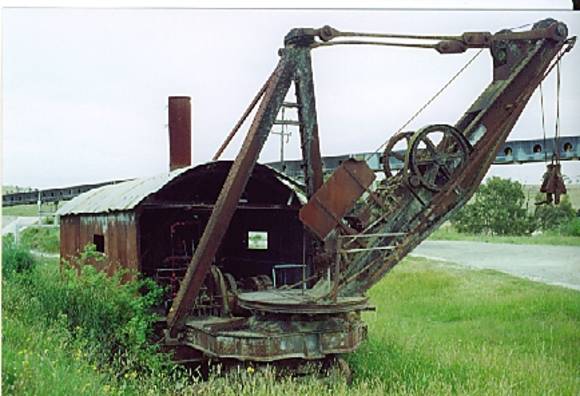| Back to search results » | Back to search page » |
|
Bucyrus Steam Shovel
Other NameBacyrus railroad steam shovel LocationLake Goldsmith Road,, BEAUFORT VIC 3373 - Property No B7065
File NumberB7065LevelNational |
|
Statement of Significance
The rail-mounted steam shovel (manufactured in 1903 by The Bucyrus Co., South Milwaukee) situated at Geelong Cement's Batesford quarry is of historical, and scientific (technical) significance at a National level. The steam shovel is of historical significance at a National level because of its association with a number of major mining, quarrying, and construction projects. The shovel was used in Queensland at Mount Morgan gold mine (1903-1908) before moving to Rockhampton for harbour construction (1908-c.1923), and then to the Brisbane sewer project (c.1923-?). By 1927 the shovel was at Fyansford after being purchased by Australian Portland Cement for use in its expanding limestone quarry. The shovel was retired during the 1960s and has remained at the quarry. The shovel is significant as a rare surviving example of early plant associated with the Australian Portland Cement Company, the largest producer of cement in Victoria. It was associated with a time of increasing mechanisation and expansion of the quarry. Its location at the quarry on a remnant railway siding enhance its significance due to its integral part in quarry operations. File Note: Moved to Lake Goldsmith Road 2010
The steam shovel is of scientific (technical) significance at a National level because it is an example of the technical evolution of the excavator, and illustrates many of the original design concepts embodied in the first successful Otis excavator made in 1835. It is the oldest known steam shovel, and the only example of its design, in Australia. The shovel was one of the first to be imported into Australia as part of an increase in mining activity, and mechanisation of mining. It is one of only a few examples in the world made by one of the largest suppliers of this type of shovel, the Bucyrus Company, Milwaukee, USA, which supplied the majority of the shovels used on the Panama Canal. It is the only example of its type in Australia, and the only known example outside America.
A feature that contributes significantly to the shovel's technical significance is the fixed-platform limited-slew configuration; this was the first successful arrangement of mechanical shovel design. This configuration was superseded by the present-day configuration in which shovels are mounted on fully rotating platforms.
The shovel is of technical significance due to its being mounted on railway type bogies, which was the only feasible method of supporting these heavy shovels until the development of crawler tracks. It was constructed in 1903, which predates the development of crawler tracks for earthmoving applications. Crawler tracks were first successfully applied to agricultural tractors in 1904. Bucyrus experimented with this type of track in 1905 but did not apply them to large excavators until 1911. Thereafter crawler tracks completely replaced rail bogies. Most shovels underwent conversion to crawler tracks. This shovel is significant because it retains the original rail bogies.
The shovel is also steam powered and demonstrates the application of a redundant method of powering mechanical excavators.
The work practices associated with operating this type of shovel can also be interpreted. These relate to the method of working a quarry face by a machine with limited mobility, and the work practices relating to the number of people used to keep the shovel operating.
Classified: 03/07/2000
Group
Mining and Mineral Processing
Category
Mine Machinery & relics




